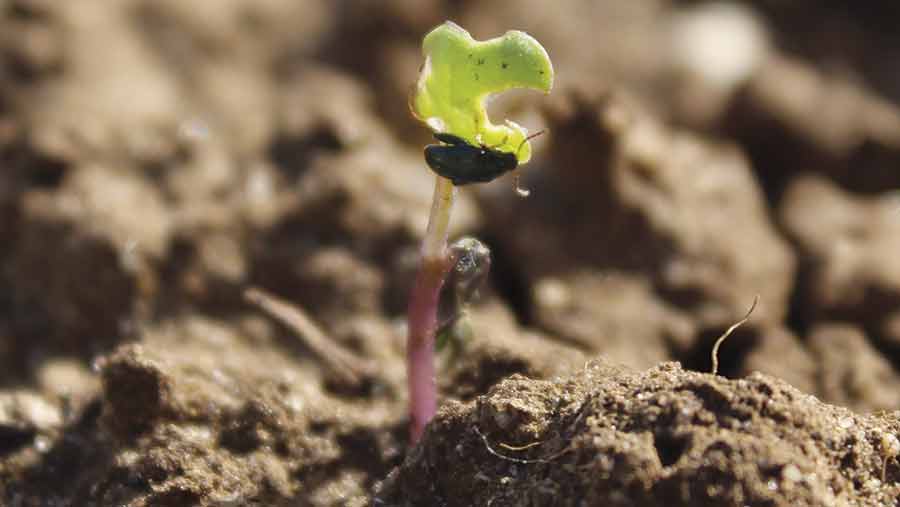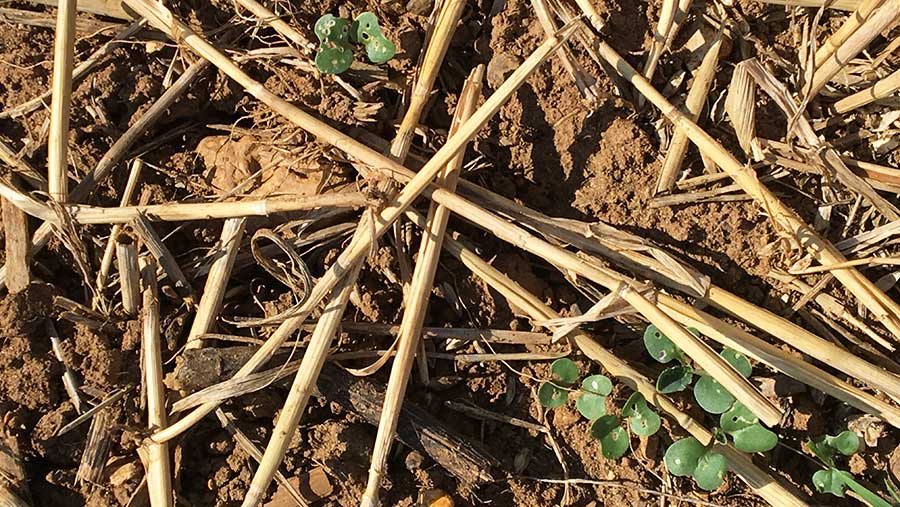Pest alert for oilseed rape growers after hot weather spell
 © Oli Hill
© Oli Hill Oilseed rape growers are being urged to monitor crops for pest damage, especially those just emerging, due to the hot spell of weather which has encouraging the migration of cabbage stem flea beetles.
Classic shot-holing damage on oilseed rape cotyledon leaves caused by flea beetles is being seen at low levels from the Scottish Borders down into Kent, with the warm weather last weekend encouraging the pest.
Crops most at risk will be those recently drilled or those about to be drilled, and growers still to drill are being advised to ensure rapid emergence and robust early growth by good seed-bed preparation, consolidation and biostimulant seed treatments.
See also: Growers take to spraying at night as flea beetles move west
Agronomists say growing flea beetle activity this week means crops sown in the the main drilling window of the second half of August are likely to encounter high grazing pressure as they emerge.
Here a biostimulant spray might be considered to help young plants grow away quicker from any damage.
“Growers should be monitoring their crops and do all they can to encourage crops to outgrow any damage,” said Paul Cartwright, oilseed rape specialist at agronomy group Frontier.

© Andy Hartley
Treatment thresholds
The latest advice from the AHDB is growers should consider treatment if flea beetles have eaten more than 25% of leaf area up to the two-leaf stage, or have eaten more than 50% of the leaf area up the four-leaf stage.
Treatment should also be considered if the crop is growing more slowly than it is being eaten by flea beetles.
See also: Cultural approach key to solving OSR’s flea beetle crisis
Foliar pyrethroid sprays are the only recommended treatment, but confirmation of flea beetle resistance to pyrethroids in the UK means these insecticides may provide little or no control.
The advice is only to use pyrethroid sprays where there is evidence of high pest pressure at emergence or if thresholds are exceeded.
To prevent resistance from spreading, it is vital to spray only if absolutely necessary and use full recommended rates.

